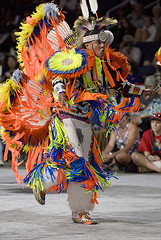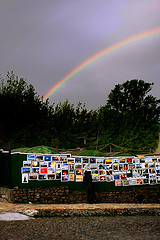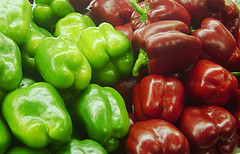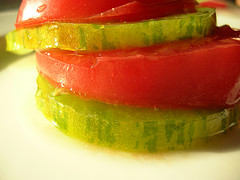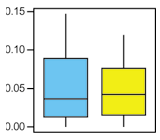Lily is working on a school project about color vision deficiency. She’s on the way to write a paper about it and has some questions which I would like to answer in this article.
Question 1: What are your feelings on the recent discovery regarding monkeys and a possible cure for their colorblindness? Do you think that it is legitimate, and do you think it should be used on humans in the future?
I think we have to look at this in a broader view. Personally I don’t believe that one of the big problems of our society is to cure color blindness. But scientific work in this area—genetic eye treatments—may help us to understand much better how we can help other people and heal some severe diseases.
And if there is a breakthrough why shouldn’t we use it on humans? Every person should be free to decide if he or she wants such a treatment or not.
Question 2: Do people affected by monochromatism look at life differently? Do they have less emotions because they live in a black and white world?
Yes, definitely. If you are suffering from monochromatism you are not only living in a gray world but also are severely sensitive to light, long sighted and more. This for sure makes your life look different.
Besides that if we only look at the world in gray colors I also think, that this changes a lot. You will see other things as all the colors don’t disturb your perception. Of course you will also not see certain things as the brightness difference might be to small for your eyes. There are certain things which you would struggle with but overall I would say if you are suffering from monochromacy you don’t look at life differently, but just at the world if you have to fulfill and live in a surrounding created by people with color vision.
And I don’t see any relation between emotions and colors because even little babies show a lot of emotions before they really can see colors at all.
Question 3: Should public schools be required to incorporate information about colorblindness in their science curriculum?
No I don’t think so. There are so many interesting scientific things which we can learn at school and color blindness doesn’t need a special treatment in this curriculum.
What I think should be done is to teach the teachers on the topic of color vision deficiency. Every teacher should at least once hear about it and maybe know some techniques to help colorblind students. I strongly believe that every colorblind pupil will find its way through school perfectly and teachers could support this if they sometimes only would know a little more about it.
Question 4: Are there any alternative attempts to cure colorblindness that you are aware of? If so, how affective are they?
There are people who claim, that corrective colored lenses or glasses can cure your color blindness or also some Chinese medicine techniques claim to help. Personally I don’t believe that there are some other possibilities to cure a color vision deficiency.
In 99% of all cases color blindness is encoded in your chromosomes. Therefore you can’t just adjust something easily or push some hidden trigger to cure it.
Question 5: What social disruptions can colorblindness bring upon a person’s life? Teenagers lives in particular. I am colorblind and my mom and sister are both artists. I can not take art class, interior design, yearbook, or any classes like that because of my condition. Can you think of anymore?
Just recently I received an email from a 15 year old boy who is getting teased by his classmates because of his color blindness. So this really can be a problem but I suppose this doesn’t happen to often and is only a problem at a certain age.
Of course, there are certain jobs you can’t accomplish as a colorblind person. Jobs which relate on color vision as their primary task like the ones you mention, or jobs which need good color vision usually for safety reasons. This often causes a lot of frustration among people who realize that they can’t start a career of their dreams, which I fully understand.
But many other people also can’t make their dreams come true. We have two possibilities to follow in this case. Either we work towards better regulations, better aids and tools, and better education in the topic of color vision deficiency. Or we have to accept that not every dream will become true in our lifes.

